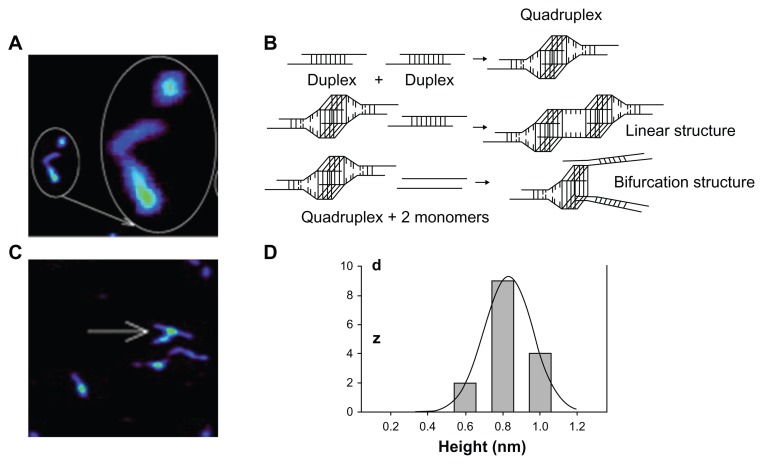Figure 4.
Formation of higher-order structure in class A oligodeoxynucleotides (ODNs). (A) Globular structure of class A cytosine-phosphate-guanosine (CpG) ODN observed by atomic force microscopy (large circled structure is a close-up view of small circle). (B) Possible higher-order structure formation of class A CpG ODNs. Class A CpG ODNs comprise a palindromic sequence in the center and poly(G) sequences at both the 5′ and the 3′ ends. Two monomer molecules form a duplex that is attributed to palindromic sequences. Two duplexes further form a quadruplex through G-tetrad formation of four poly(G) ends. Association of the quadruplex with another duplex causes a linear structure. Two other CpG monomers replace the original duplex by forming two new duplexes, which leads to formation of a bifurcation with three ends. (C) A bifurcation structure of class A CpG ODNs imaged by atomic force microscopy. (D) Height histogram of higher-order structure in class A CpG ODNs. Reproduced with permission from Klein et al.58

